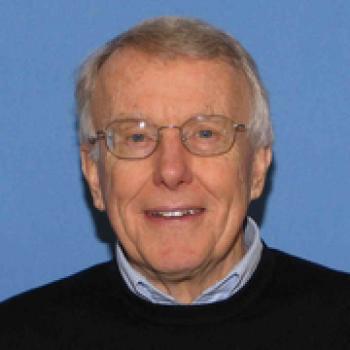
Edmond L. Berger
Division Emeritus
Biography
Ed Berger is an elementary particle theorist. He earned an undergraduate degree in Physics from MIT (1961) and a PhD from Princeton University (1965). He began his career at Argonne in 1969 during the early years of the High Energy Physics Division and the infancy of the Standard Model of particle physics. Recruiting actively, he built up an active small group of young theorists concentrating initially on strong interactions. Later, leveraging Argonne LDRD resources, he fostered a broadening of the Division’s theory effort to include electro-weak symmetry breaking and physics beyond the standard model. In 2009 and 2010, as a member of a Laboratory-wide Senior Computational Scientist Search Committee, he recognized the opportunity for a major enhancement of the computational science efforts in the Division and Laboratory. He identified and recruited distinguished senior candidates, resulting in the establishment of the Cosmological Physics and Advanced Computing group.
Berger was elected an American Physical Society (APS) Fellow in 1975 and received a University of Chicago Award for Distinguished Performance at Argonne in 1987. He was promoted to Senior Physicist at Argonne in 1976, and became an Argonne Distinguished Fellow in 1995. Berger retired in 2016 with over 45 years of service to the Laboratory and the broader science community. He remains active in research. Many postdoctoral appointees who worked with Berger at Argonne subsequently went on to successful careers and leadership positions elsewhere in the US and abroad.
Research
Hallmarks of Berger’s research include collaboration with postdoctoral scientists in the Argonne theory group, along with mutually beneficial interactions with experimenters working at the Argonne ZGS, Brookhaven, CERN, Fermilab, and SLAC. He has focused on hadronic resonance phenomena, notably axial-vector mesons, and on phenomenological aspects of high energy collider physics, with emphasis on developments in perturbative quantum chromodynamics (QCD), Higgs boson production and decay, and beyond-the-standard-model new physics. His published papers include analytic and unitary scattering amplitudes for coupled channel systems at low energies; next-to-leading order perturbative contributions for high energy scattering processes; all-orders resummation of the effects of soft-gluon emission for transverse momentum distributions and for total cross sections; important standard model ‘backgrounds’ to Higgs boson and new physics signals at hadron colliders; beyond-the-standard model searches at Large Hadron Collider energies; and the art of global analysis to extract parton distribution functions of hadrons and nuclei. He has published on topics at the intersection of nuclear and particle physics and presented numerous invited talks at conferences, universities, and other laboratories. A list of more than 300 of his papers may be found at http://inspirehep.net/search?ln=en&p=find+a+E+L+Berger&of=hb&action_search=Search&sf=earliestdate&so=d.
External Activities and Appointments
Berger served as an appointed member of the DOE/NSF High Energy Physics Advisory Panel (HEPAP) and on several DOE review committees, on the Fermilab Physics Advisory Committee, and on the Brookhaven High Energy and Nuclear Physics Advisory Committee. He was elected by the membership to the Executive Committee of the APS Division of Particles and Fields (DPF), serving as Chair of the Executive Committee in 1990, and to the Chair line of the Forum on International Physics (FIP) of the APS, becoming FIP Chair in 2015. He was notably active in the organization of major international meetings, including being Chair of the 1990 DPF Snowmass Summer Study and co-Chair of the 2005 Snowmass International Linear Collider Summer Study. Berger was a Visiting Scientist in the Theory Group at SLAC in 1978–1979, a Visiting Staff Member in the Theory Division at CERN during the periods 1972 – 1974, 1983 – 1984, and 1992 – 1993; and a visitor for shorter periods at the Aspen Center for Physics, the Kavli Institute in Santa Barbara, the KITPC in Beijing, the Galileo Galilei Institute in Florence, the National Center for Theoretical Sciences in Taiwan, and elsewhere.